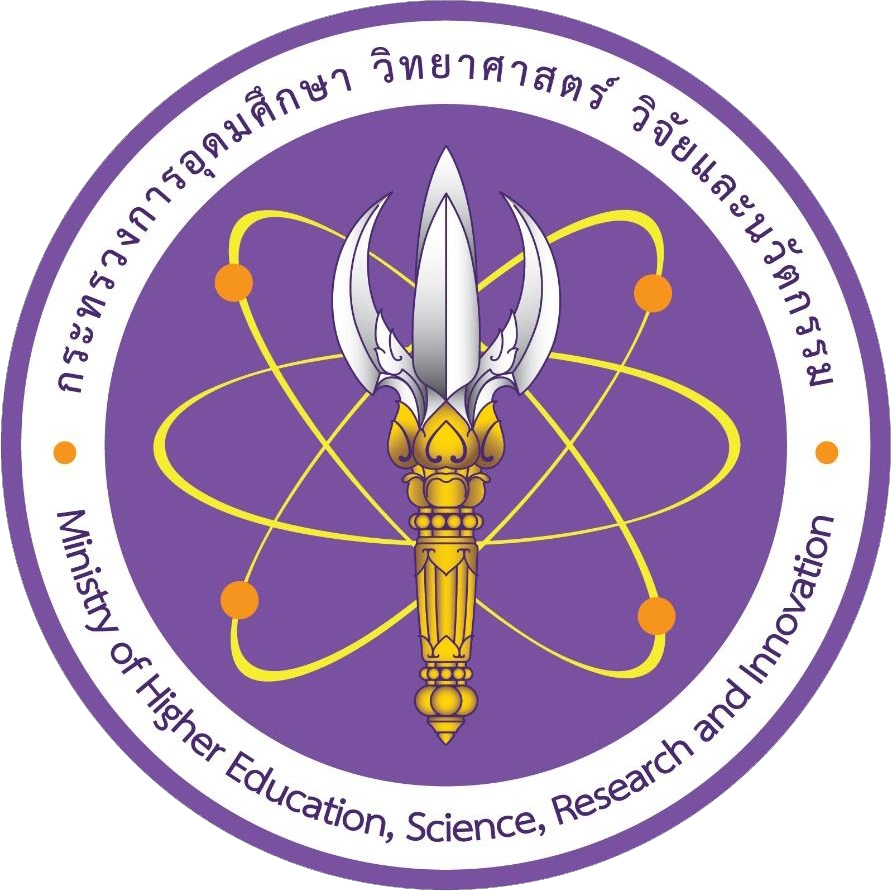ชื่อโครงการ
การพัฒนาและยกระดับห่วงโซ่อุปทานโกโก้ในพื้นที่จังหวัดน่านบนฐานทรัพยากรพื้นถิ่นสู่เศรษฐกิจหมุนเวียนคำสำคัญ
โกโก้,ห่วงโซ่อุปทาน,ห่วงโซ่คุณค่า,การพัฒนาบทคัดย่อ
โครงการวิจัยการยกระดับห่วงโซ่อุปทานโกโก้ในพื้นที่จังหวัดน่านบนฐานทรัพยากรพื้นถิ่นสู่เศรษฐกิจหมุนเวียน มีวัตถุประสงค์เพื่อศึกษาสภาพปัญหาปัจจุบันของห่วงโซ่อุปทานโกโก้น่านและรวบรวมข้อมูลพื้นฐานเกษตรกรและพื้นที่เพาะปลูกโกโก้ในจังหวัดน่าน วิเคราะห์และออกแบบต้นแบบระบบนิเวศทางธุรกิจโกโก้น่านบนกลไกระบบการตลาดแบบมีส่วนร่วมที่จะสร้างโอกาสในการเพิ่มรายได้และกระจายรายได้ให้เป็นธรรมแก่ผู้ประกอบการท้องถิ่นในระบบนิเวศทางธุรกิจโกโก้น่าน โดยอาศัยกระบวนการพัฒนา “คน” ในหน่วยธุรกิจที่เกี่ยวข้อง บนกลไกของกรอบมาตรฐานเพื่อให้สามารถผลิต “ของ” หรือโกโก้ ที่มีคุณภาพ สอดคล้องกับความต้องการของ “ตลาด” (Supply-Demand Balancing) ภายใต้การดำเนินงานของโครงการย่อยที่ 1 – 3 ผลการศึกษาห่วงโซ่อุปทานโกโก้น่านเดิม (Old Value Chain) เกษตรกร (ธุรกิจวัตถุดิบ) จำหน่ายโกโก้ผลสดในราคากิโลกรัมละ 13 บาท ให้กับสหกรณ์การเกษตร (ธุรกิจรวบรวมวัตถุดิบ) และสหกรณ์การเกษตรจำหน่ายโกโก้ผลสดสู่ตลาดราคากิโลกรัมละ 15 บาท โดยมีค่าบริหารจัดการกิโลกรัมละ 2 บาท โดยมีปริมาณรวบรวมเฉลี่ยเดือนเพียงละ 2,044 กิโลกรัม เนื่องจากผลโกโก้คุณภาพต่ำผ่านเกณฑ์การรับซื้อร้อยละ 28 และยังพบวิกฤตหลังจากตลาดที่รับซื้อโกโก้ผลสดขาดสภาพคล่องทางการเงินทำให้ไม่สามารถจ่ายเงินให้กับสหกรณ์การเกษตรได้ ทำให้ทางสหกรณ์การเกษตรหยุดรวบรวมผลผลิตเป็นผลให้โกโก้ผลสดตกค้างในพื้นที่มากกว่า 5,000 กิโลกรัมต่อเดือน และในส่วนของผลการพัฒนาศักยภาพและเพิ่มสมรรถนะหน่วยธุรกิจในระบบนิเวศทางธุรกิจโกโก้น่านทำให้ธุรกิจวัตถุดิบมีระบบมาตรฐานการจัดการแปลงที่ส่งผลให้เกษตรกรเพิ่มขีดความสามารถเชิงปริมาณผลผลิตจำหน่ายต่อรอบเฉลี่ยจาก 15.56 กิโลกรัมต่อไร่ เป็น 44.65 กิโลกรัมต่อไร่ ส่งผลให้รายได้เพิ่มขึ้นคิดเป็นร้อยละ 72.17 และธุรกิจรวบรวมมีระบบมาตรฐานการคัดคุณภาพผลผลิตช่วยจัดการผลผลิตให้ได้คุณภาพตามความต้องการของตลาด ซึ่งในระหว่างระยะเวลาดำเนินงานวิจัยนี้สหกรณ์การเกษตรได้เริ่มใช้ระบบการคัดคุณภาพในการจัดซื้อ-จำหน่าย 2 เกรด ประกอบด้วยแบบเกรด A และแบบคละขนาด ผลจากการรวบรวมผลผลิตที่ผ่านคุณภาพเพิ่มขึ้นของเครือข่ายสมาชิกธุรกิจวัตถุดิบโดยเฉลี่ย 4,948 กิโลกรัมต่อเดือน ทำให้เกิดรายได้เฉลี่ยเพิ่มขึ้นเป็น 62,209 บาทต่อเดือน คิดเป็นร้อยละ 102.9 และนอกจากนี้ห่วงโซ่อุปทานใหม่ที่สามารถแก้ปัญหาผลโกโก้ที่ไม่มีการรับซื้อจากการสร้างข้อต่อธุรกิจใหม่ โดยการยกระดับหน่วยธุรกิจรวบรวมในห่วงโซ่อุปทานโกโก้น่านให้สามารถแปรรูปขั้นต้นด้วยการพัฒนาทักษะการแปรรูปโกโก้ผลสดเป็นเมล็ดโกโก้ให้แก่สหกรณ์การเกษตร และยังมีกลุ่มวิสาหกิจชุมชน รวมถึงเกษตรกร (New Skill) ซึ่งส่งผลผลิตเมล็ดโกโก้เข้าสู่ระบบเครือข่ายตลาดแบบมีส่วนร่วมในท้องถิ่นและนอกพื้นที่จังหวัดน่านได้ โดยปริมาณและความต้องการเมล็ดโกโก้เฉลี่ยเดือนละ 1,100 กิโลกรัม ในราคา 170 บาทต่อกิโลกรัม โดยต้นทุนการผลิตเมล็ดโกโก้ เท่ากับ 156 บาทต่อกิโลกรัม สามารถสร้างรายได้ให้กับธุรกิจแปรรูปเมล็ดโกโก้ได้เฉลี่ยเดือนละ 187,800 บาท ผลการขยายบทบาทของธุรกิจรวบรวมให้เป็นธุรกิจแปรรูปขั้นต้นโดยการเพิ่มสมรรถนะและยกระดับขีดความสามารถของเกษตรกรและสหกรณ์การเกษตรให้สามารถแปรรูปเมล็ดโกโก้ จึงทำให้เพิ่มรายได้ให้กับสหกรณ์การเกษตรและสร้างการจ้างงานใหม่ให้เกิดขึ้นในชุมชนซึ่งส่งผลให้มีอัตราการเติบโตมูลค่าเศรษฐกิจฐานรากเพิ่มมากขึ้น รวมทั้งเพิ่มสัดส่วนแบ่งการกระจายรายได้ในห่วงโซ่อุปทานโกโก้น่านใหม่ (New Value Chain) โดยสัดส่วนการกระจายรายใหม่ของธุรกิจวัตถุดิบ ธุรกิจรวบรวมและธุรกิจแปรรูปขั้นต้นมีค่าเท่ากับ 9.9 เท่า 2 เท่าและ 17.1 เท่า ตามลำดับ ดังนั้นการพัฒนาต้นแบบระบบนิเวศทางธุรกิจโกโก้น่านบนกลไกระบบการตลาดแบบมีส่วนร่วมให้สามารถขับเคลื่อนธุรกิจได้อย่างเป็นรูปธรรม ประกอบด้วยกลุ่มธุรกิจหลักในพื้นที่ 3 ส่วน ได้แก่ ธุรกิจวัตถุดิบ ธุรกิจรวบรวมและธุรกิจแปรรูปขั้นต้นสามารถช่วยเพิ่มรายได้มากกว่าร้อยละ 15 และเกิดกระจายรายได้อย่างเป็นธรรมแก่ผู้ประกอบการท้องถิ่นในระบบนิเวศทางธุรกิจโกโก้น่าน
Title
Upgrading the Cocoa Value Chain in Nan Province Based on Local Resources and Circular Economy PrinciplesKeywords
Cocoa,Supply Chain,Value Chain,DevelopmentAbstract
The research – Upgrading the Cocoa Supply Chain in Nan Province Based on Local Resources Towards a Circular Economy – aims to: study the current problems of the Nan cocoa supply chain; analyze the current situation of the supply chain from primary data of farmers and cocoa plantations in Nan; and design a prototype of the Nan cocoa business ecosystem based on a participatory marketing mechanism. The mechanism creates opportunities for the cocoa farmers in Nan to increase their revenues and also to distribute the revenues fairly among local entrepreneurs in the Nan’s cocoa business ecosystem. Through this end, the ecosystem prototype develops “human resources” in related business units according to a standard framework, enabling the supply chain to produce “products” or high-quality cocoa that meet the market’s needs i.e., Supply-Demand Balancing. This task was successfully carried out under sub-project 1-3. The analysis of the existing cocoa supply chain i.e. Old Value Chain indicates that the cocoa farmers i.e., raw material suppliers, sold their cocoa pods to local agricultural cooperatives at the price of 13 Baht/Kg. The local agricultural cooperatives i.e., raw material collectors then sold the collected cocoa to the market at the price of 15 Baht/Kg. As a result, the cooperatives obtained 2 Baht/Kg. as a management fee. There was an average of 2,044 kilograms per month that the cooperatives collected cacao pods from the farmers. The low volume of collected cocoa was due mainly to the below-standard cacao pods produced by the local farmers. The percentage of the cacao pods that met the buyers’ standard was as low as 28%. The situation was worsened when the buyers who bought cacao pods lacked financial liquidity, i.e., unable to pay cash to the cooperatives. Consequently, the cooperatives paused collecting cacao pods from farmers, resulting in more than non-collected 5,000 kilograms of cacao pods each month in Nan. The proposed prototype of the Nan cocoa business ecosystem provides a framework for the development and enhancement of the Nan cocoa’s business units. The framework includes a standards system for farm management that can increase the productivity of cacao pods from 15.56 to 44.65 Kg/Rai per planting cycle. As a result, the revenues of the cocoa farmers increased by 72.17%. In addition, the cooperatives, i.e., the collector business implemented a quality standard system for sorting cacao pods based on product quality, that meet buyers’ requirements. During research running, two grades i.e., A-Grade and Mix-sized Grade had been used in collection units for buying the cacao pods from farmer members and selling to cacao pod buyers. The implementation of the quality standard system resulted in an average of 4,948 kilograms in cocoa volume and thereby an increase of about 62,209 Baht (102.9%) in revenue per month within the network of the Nan cocoa raw material suppliers. In addition, the framework enhanced the capability of the existing collector business units. Specifically, the cooperatives can perform a new value-added activity through a primary processing of cacao pods into bean, which can resolve the problem of unsold cacao pods. The local groups of enterprises as well as farmers were also keen in learning and developing new skills in the primary processing of cacao pods into bean. As a result, high-quality cocoa bean from the Nan’s local business units can enter both Nan’s local and non-local markets of cocoa. The average demand for cocoa beans is about 1,100 kg/month at a price of 170 baht/kg. The production cost of cocoa beans is 156 Baht/kg. Hence, the average income for the cocoa bean processing business is 187,800 Baht/month. Importantly, the development of cocoa collector businesses into primary processing businesses by increasing the capacity and upgrading the capability of the farmers and agricultural cooperatives to be able to process cacao pods into beans increased the income and created new employment in the community. As a result, this enhances the development and growth of the grassroot economy as well as improves the share of income distribution in the New Value Chain of cocoa supply chain. The results of a new distribution ratio of incomes among the raw material business, collector business, and primary processing business were 9.9, 2, and 17.1 respectively. In short, the development of the proposed Nan cocoa business ecosystem model based on a participatory marketing mechanism can enhance the growth of the Nan cocoa business in a sustainable manner. The three main groups of business consisting raw material business, collector business, and primary processing businesses can help increasing the revenues by more than 15% and create a fair distribution of income to local entrepreneurs in the Nan Cocoa Business Ecosystem.


